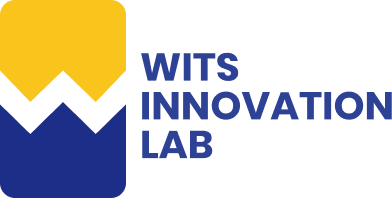Published - 2 months ago | 7 min read
Build vs Buy Software in 2025: The Hidden Costs That Will Shape Your Next Move
The “build vs buy” software question isn’t new, but the stakes and the details have changed. The old calculation used to be simple: building custom software took time and money, but you owned the result. Buying off-the-shelf was fast, cheap, but limited. Today, in the world of AI, automation, and always-on cloud delivery, that equation is more complex, and the hidden costs are bigger than ever.
If you’re facing a critical technology decision in 2025, read on. This guide will unpack what most CFOs, CIOs, and founders get wrong, expose the less obvious risks, and show how the smartest organizations blend custom and pre-built solutions for long-term advantage.
If you’re facing a critical technology decision in 2025, read on. This guide will unpack what most CFOs, CIOs, and founders get wrong, expose the less obvious risks, and show how the smartest organizations blend custom and pre-built solutions for long-term advantage.
Why the Build vs Buy Debate Is Different Now
Let’s start with what’s new:
1. AI and Automation: Most software now incorporates AI in some form—sometimes baked into off-the-shelf solutions, sometimes as part of a custom stack. This affects not only the upfront cost but also the ongoing operational complexity and risk.
2. Cloud-Native Everything: Cloud services mean you can spin up infrastructure and deploy solutions in hours, not months. But vendor lock-in, integration issues, and compliance headaches remain real.
3. Hybrid Solutions: The lines between build and buy have blurred. Many teams “buy” platforms and “build” on top of them, or buy for the core and build custom integrations, analytics, or workflows.
4. Security and Compliance: Regulatory pressure and the cost of breaches have skyrocketed. This isn’t just an IT issue—bad decisions here kill brands and careers.
1. AI and Automation: Most software now incorporates AI in some form—sometimes baked into off-the-shelf solutions, sometimes as part of a custom stack. This affects not only the upfront cost but also the ongoing operational complexity and risk.
2. Cloud-Native Everything: Cloud services mean you can spin up infrastructure and deploy solutions in hours, not months. But vendor lock-in, integration issues, and compliance headaches remain real.
3. Hybrid Solutions: The lines between build and buy have blurred. Many teams “buy” platforms and “build” on top of them, or buy for the core and build custom integrations, analytics, or workflows.
4. Security and Compliance: Regulatory pressure and the cost of breaches have skyrocketed. This isn’t just an IT issue—bad decisions here kill brands and careers.

The True Cost of Building Custom Software
1.Upfront Investment: Beyond Just Development
Building in-house gives you the most control. You can design exactly what your business needs, create unique processes, and own your data and code. But…
- Development Costs: Salaries for engineers, designers, QA, and PMs. Even a small MVP takes months. For anything substantial, six figures is a starting point.
- Time to Market: Expect a significant delay before value is delivered, especially if requirements shift or teams change.
- Opportunity Cost: While your team builds, you’re not moving on other priorities—or responding to shifting market trends.
- Development Costs: Salaries for engineers, designers, QA, and PMs. Even a small MVP takes months. For anything substantial, six figures is a starting point.
- Time to Market: Expect a significant delay before value is delivered, especially if requirements shift or teams change.
- Opportunity Cost: While your team builds, you’re not moving on other priorities—or responding to shifting market trends.
2. Technical Debt: The Silent Multiplier
Custom software inevitably collects technical debt:
- Shortcuts for speed: Features built “just to launch” become permanent, raising maintenance costs later.
- Skill Silos: Key knowledge gets trapped in the minds of a few developers, who may leave.
- Maintenance: Expect 40–80 hours per month just to keep business-critical apps healthy.
- Upgrades and Refactoring: Every skipped upgrade compounds future cost and risk.
- Shortcuts for speed: Features built “just to launch” become permanent, raising maintenance costs later.
- Skill Silos: Key knowledge gets trapped in the minds of a few developers, who may leave.
- Maintenance: Expect 40–80 hours per month just to keep business-critical apps healthy.
- Upgrades and Refactoring: Every skipped upgrade compounds future cost and risk.
3. People Risk
- Retention: Developers change jobs faster than ever (turnover rates above 30%). Losing a lead can set a project back by months.
- Recruiting: Niche skills or familiarity with your custom stack can be hard to replace, making long-term continuity difficult.
- Morale: Teams are happiest when solving interesting challenges, but long stints on bugfixes or legacy support can tank engagement.
Industry stat: CIOs estimate 20-40% of technology value is lost to technical debt before depreciation.
- Recruiting: Niche skills or familiarity with your custom stack can be hard to replace, making long-term continuity difficult.
- Morale: Teams are happiest when solving interesting challenges, but long stints on bugfixes or legacy support can tank engagement.
Industry stat: CIOs estimate 20-40% of technology value is lost to technical debt before depreciation.
4. Security and Compliance
- Total Responsibility: You own all aspects of compliance, security, and privacy.
- Audit Burden: Every new regulation (GDPR, CCPA, PCI, etc.) requires continuous updates, documentation, and regular testing.
- Breach Costs: A single breach can cost millions and irreparably damage your brand.
- Audit Burden: Every new regulation (GDPR, CCPA, PCI, etc.) requires continuous updates, documentation, and regular testing.
- Breach Costs: A single breach can cost millions and irreparably damage your brand.
The Real Cost of Buying Off-the-Shelf Software
1. License Fees: Easy to Underestimate
- Lower Upfront, But Ongoing: You pay monthly or annual fees that seem small—until you scale, or need premium features.
- Tiered Pricing and Usage Limits: Hidden costs for extra users, storage, API calls, and integrations.
- Customizations Add Up: Every tweak beyond the standard incurs charges
- Tiered Pricing and Usage Limits: Hidden costs for extra users, storage, API calls, and integrations.
- Customizations Add Up: Every tweak beyond the standard incurs charges
2. Vendor Lock-In
- Data Ownership: Can you export your data? How hard is migration if you leave?
- Custom Features: If you rely on vendor-provided APIs or workflows, a change in their roadmap can break your process.
- Price Increases: Vendors may hike fees once you’re fully committed.
- Custom Features: If you rely on vendor-provided APIs or workflows, a change in their roadmap can break your process.
- Price Increases: Vendors may hike fees once you’re fully committed.
3. Integration and Fit
- Force-Fitting Business Processes: Off-the-shelf rarely fits exactly. You may have to adapt your operations to the tool or buy additional solutions to fill gaps.
- Shadow IT and Workarounds: When the tool doesn’t do what teams need, spreadsheets or unofficial tools fill the void, creating risk.
Industry stat: CIOs estimate 20-40% of technology value is lost to technical debt before depreciation.
- Shadow IT and Workarounds: When the tool doesn’t do what teams need, spreadsheets or unofficial tools fill the void, creating risk.
Industry stat: CIOs estimate 20-40% of technology value is lost to technical debt before depreciation.
4. Support and Upgrades
- You’re One of Many: Response times, roadmap influence, and custom requests are often limited.
- Mandatory Updates: Vendors may push changes that disrupt your workflows, or sunset features without your input.
- Mandatory Updates: Vendors may push changes that disrupt your workflows, or sunset features without your input.
The Not-So-Obvious Hidden Costs
1. Hybrid Complexity
The most common 2025 reality: you end up buying a platform, but customizing with code, integrations, or low-code tools. This adds:
- Multi-vendor Management: Multiple contracts, SLAs, support channels.
- Security Gaps: Data flows across more systems—harder to monitor.
- Compliance Puzzle: Who’s responsible for which part of the stack? (Hint: regulators may say “you.”)
- Multi-vendor Management: Multiple contracts, SLAs, support channels.
- Security Gaps: Data flows across more systems—harder to monitor.
- Compliance Puzzle: Who’s responsible for which part of the stack? (Hint: regulators may say “you.”)
2. Tax and Accounting Surprises
- CapEx vs OpEx: Building is often capitalized; buying is expensed. New US tax laws mean R&D must be amortized over five years, not deducted immediately.
- Budgeting Blind Spots: Subscription fatigue is real—small recurring charges from multiple tools often outpace the cost of a one-time build.
- Budgeting Blind Spots: Subscription fatigue is real—small recurring charges from multiple tools often outpace the cost of a one-time build.
3. Operational Disruption
Implementation Disruption: Any new system—custom or bought—will disrupt workflows, require training, and temporarily lower productivity.
Resistance to Change: Staff may resist new workflows, slowing adoption and ROI.
Resistance to Change: Staff may resist new workflows, slowing adoption and ROI.
4. Maintenance No One Plans For
- Custom solutions: Maintenance, bug fixes, new feature requests never stop.
- Bought solutions: Even with vendor support, you still need internal resources for integration, user support, and vendor management.
- Bought solutions: Even with vendor support, you still need internal resources for integration, user support, and vendor management.
Security and Compliance: The Make-or-Break Factor
Vendor-Managed vs. In-House Responsibility
With off-the-shelf tools, you share risk with a (hopefully reputable) provider—but you are always legally on the hook for your data and user privacy.
- In-house: Full control over standards, but you own every vulnerability.
- Vendor: Outsource expertise and compliance certifications, but lose some control and flexibility.
Smart teams often blend both: core data stays in-house, but leverage vendor solutions for edge workloads or non-critical data.
- In-house: Full control over standards, but you own every vulnerability.
- Vendor: Outsource expertise and compliance certifications, but lose some control and flexibility.
Smart teams often blend both: core data stays in-house, but leverage vendor solutions for edge workloads or non-critical data.

The Real Cost of Getting It Wrong
The average data breach now costs $4.88 million. Regulatory fines and loss of customer trust can cripple a company. Compliance costs (GDPR, HIPAA, SOX) are rising fast, with even routine annual compliance often exceeding $1 million.
Strategic Flexibility and Long-Term ROI
1. Custom-Built for Agility
Building gives you the power to:
- Pivot fast: Add features, integrate with new systems, adapt as your market shifts.
- Own differentiation: No one else has your exact workflows or automations.
- Control the stack: Choose your security, hosting, data storage, and update cadence.
But… custom means you pay for every change, and the more bespoke your solution, the harder it is to find future talent to support it.
- Pivot fast: Add features, integrate with new systems, adapt as your market shifts.
- Own differentiation: No one else has your exact workflows or automations.
- Control the stack: Choose your security, hosting, data storage, and update cadence.
But… custom means you pay for every change, and the more bespoke your solution, the harder it is to find future talent to support it.
2. Off-the-Shelf for Scale
Buying software makes sense when:
- Your need is standard: Payroll, email, HR, accounting, CRM—all have proven, robust SaaS options.-
- Time-to-value matters: Implementation in weeks, not quarters.
- You need external expertise: Regulatory compliance, security certifications, or global support are often better handled by vendors with scale.
- Your need is standard: Payroll, email, HR, accounting, CRM—all have proven, robust SaaS options.-
- Time-to-value matters: Implementation in weeks, not quarters.
- You need external expertise: Regulatory compliance, security certifications, or global support are often better handled by vendors with scale.
3. Talent and Team: The Human Equation
Software is built and run by people.
- Custom build = Talent risk. Losing a key developer hurts.
- Buy = Relationship risk. Vendor goes out of business or changes priorities.
Retention, documentation, cross-training, and clear contracts all matter.
Mixed strategies—where critical IP is internal, but commodity features are bought—balance these risks.
- Custom build = Talent risk. Losing a key developer hurts.
- Buy = Relationship risk. Vendor goes out of business or changes priorities.
Retention, documentation, cross-training, and clear contracts all matter.
Mixed strategies—where critical IP is internal, but commodity features are bought—balance these risks.
Hybrid and Modular Approaches: The 2025 Norm
Today, few organizations go all-in on just building or just buying.
Modern best practice:
- Buy for the backbone. Use mature SaaS for core needs (CRM, HRIS, email, collaboration).
- Build for differentiation. Create custom portals, unique data models, or proprietary automations that drive your competitive edge.
- Connect everything via APIs. Prioritize platforms with open integration so you’re never locked in.
- Plan for change. Use modular, cloud-native tools that can swap in or out as your business evolves.
Modern best practice:
- Buy for the backbone. Use mature SaaS for core needs (CRM, HRIS, email, collaboration).
- Build for differentiation. Create custom portals, unique data models, or proprietary automations that drive your competitive edge.
- Connect everything via APIs. Prioritize platforms with open integration so you’re never locked in.
- Plan for change. Use modular, cloud-native tools that can swap in or out as your business evolves.
Decision Checklist: What to Ask in 2025
What is truly unique about your process or offering?
How fast do you need to launch—and what’s the cost of waiting?
Do you have, or can you hire, the talent needed to build and maintain?
What are the data and compliance risks—now and as you grow?
Can you easily exit or migrate if your vendor or strategy changes?
What’s the true total cost of ownership over 3, 5, and 10 years?
Where will future technical debt hurt you the most?
How will you keep key knowledge from being lost to turnover or vendor churn?
How fast do you need to launch—and what’s the cost of waiting?
Do you have, or can you hire, the talent needed to build and maintain?
What are the data and compliance risks—now and as you grow?
Can you easily exit or migrate if your vendor or strategy changes?
What’s the true total cost of ownership over 3, 5, and 10 years?
Where will future technical debt hurt you the most?
How will you keep key knowledge from being lost to turnover or vendor churn?
Final Thoughts: The Right Mix Wins
In 2025, the smartest companies don’t just ask “build or buy?”—they map their true needs, budget for the costs no one talks about, and embrace hybrid, modular, API-driven systems.
Custom software is not always the most expensive, and bought solutions are not always the cheapest. The hidden costs—technical debt, security gaps, slow adoption, vendor lock-in, and missed opportunities—are what tip the scale.
Success means understanding your business well enough to build only what’s unique, buy only what’s proven, and blend the two for a system that’s not just cost-effective but future-ready.
Custom software is not always the most expensive, and bought solutions are not always the cheapest. The hidden costs—technical debt, security gaps, slow adoption, vendor lock-in, and missed opportunities—are what tip the scale.
Success means understanding your business well enough to build only what’s unique, buy only what’s proven, and blend the two for a system that’s not just cost-effective but future-ready.

Written by / Author
Manasi Maheshwari
Found this useful? Share With
Top blogs
Most Read Blogs
Wits Innovation Lab is where creativity and innovation flourish. We provide the tools you need to come up with innovative solutions for today's businesses, big or small.
© 2025 Wits Innovation Lab, All rights reserved
Crafted in-house by WIL’s talented minds

